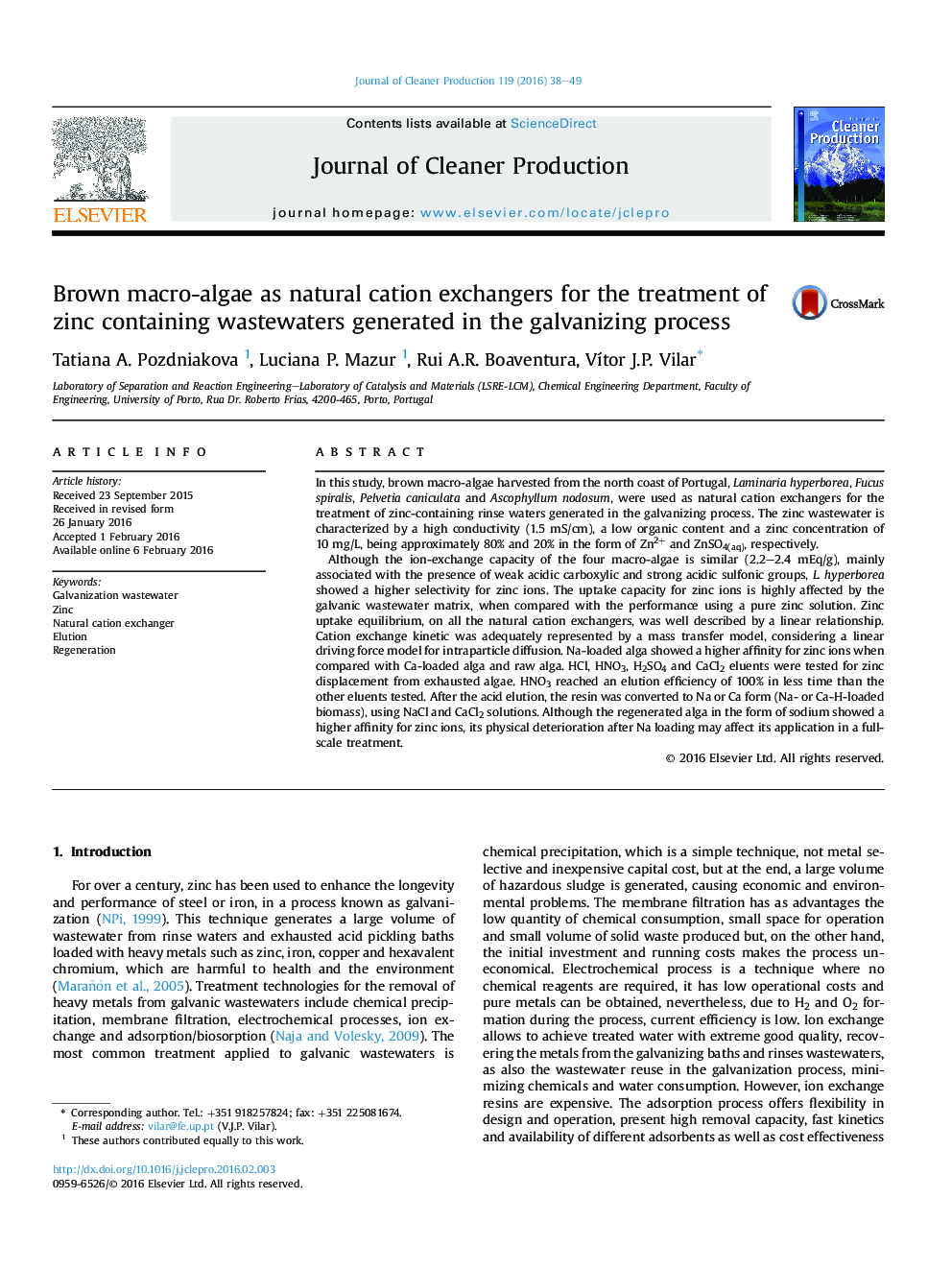| کد مقاله | کد نشریه | سال انتشار | مقاله انگلیسی | نسخه تمام متن |
|---|---|---|---|---|
| 1744275 | 1522130 | 2016 | 12 صفحه PDF | دانلود رایگان |
• Macroalgae as natural cation exchangers for the treatment of galvanic wastewater.
• Raw Laminaria hyperborea showed a higher affinity for zinc from the galvanic effluent.
• The zinc ions were easily displaced from the exhausted biomass using acid eluents.
• The regenerated Ca-loaded alga showed similar performance to raw Ca-alga.
• Na-loaded alga showed severe physical deterioration due to alginate solubilization.
In this study, brown macro-algae harvested from the north coast of Portugal, Laminaria hyperborea, Fucus spiralis, Pelvetia caniculata and Ascophyllum nodosum, were used as natural cation exchangers for the treatment of zinc-containing rinse waters generated in the galvanizing process. The zinc wastewater is characterized by a high conductivity (1.5 mS/cm), a low organic content and a zinc concentration of 10 mg/L, being approximately 80% and 20% in the form of Zn2+ and ZnSO4(aq), respectively.Although the ion-exchange capacity of the four macro-algae is similar (2.2–2.4 mEq/g), mainly associated with the presence of weak acidic carboxylic and strong acidic sulfonic groups, L. hyperborea showed a higher selectivity for zinc ions. The uptake capacity for zinc ions is highly affected by the galvanic wastewater matrix, when compared with the performance using a pure zinc solution. Zinc uptake equilibrium, on all the natural cation exchangers, was well described by a linear relationship. Cation exchange kinetic was adequately represented by a mass transfer model, considering a linear driving force model for intraparticle diffusion. Na-loaded alga showed a higher affinity for zinc ions when compared with Ca-loaded alga and raw alga. HCl, HNO3, H2SO4 and CaCl2 eluents were tested for zinc displacement from exhausted algae. HNO3 reached an elution efficiency of 100% in less time than the other eluents tested. After the acid elution, the resin was converted to Na or Ca form (Na- or Ca-H-loaded biomass), using NaCl and CaCl2 solutions. Although the regenerated alga in the form of sodium showed a higher affinity for zinc ions, its physical deterioration after Na loading may affect its application in a full-scale treatment.
Figure optionsDownload as PowerPoint slide
Journal: Journal of Cleaner Production - Volume 119, 15 April 2016, Pages 38–49
